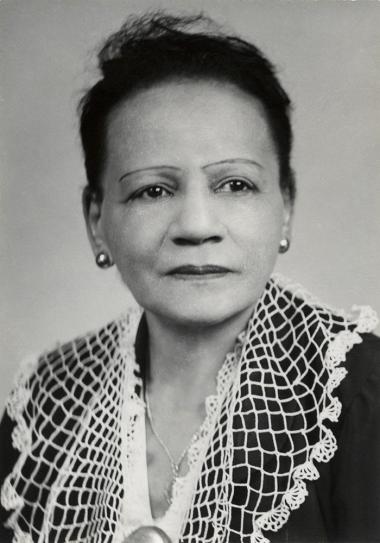
Elizabeth Prophet (1890–1960), born Nancy Elizabeth Profitt in Providence (some sources say Warwick), Rhode Island, was a sculptor of African and Native North American descent. She was the first black graduate of the Rhode Island School of Design, graduating in 1918 with a degree in painting and freehand drawing. After graduating and finding little success with portrait painting and having to endure racist attitudes, she left Rhode Island and her husband of seven years and traveled to Paris in 1922.
In Paris, Elizabeth studied sculpture, while struggling with extreme poverty. One of her first works was a nude woman title "Poverty." In 1924, one of her sculpted pieces, a wooden bust, was included in the Salon d'Automne exhibition, and her work continued to be exhibited there in 1925, 1926, and 1927. She also struggled with her racial identity; she described her mother as "mixed Negro" and her father identified as both African and American Indian. Nancy identified in the 1910 census as "mulatto' and in 1920 as "Indian." In her diary written while in Paris, her struggles with poverty and racial identity are highlighted in this passage: “Days of plenty, and then days of want. Poverty, detestable poverty, how you trail behind me ever screeching out your presence. Think you to ever make me a subject of your kingdom? Never! Though I die of hunger I shall never bend the knee to your majesty for I am not of your race.”
In 1927, she began receiving financial support from the Students Fund of Boston. She also received emotional support from W.E.B. Du Bois, with whom she had an intimate relationship. In 1929, she returned to the United States for eleven months, staying much of that time with the Du Bois family. She sold a major piece, "Discontent," to collectors who then donated it to the art museum at the Rhode Island School of Design. When she returned to Paris, she again lived in poverty until admirers of her work helped support her financially. She exhibited two sculptures in Paris in 1932 and received praise from critics for the vision, originality, and expressiveness of her work. In 1932, while in the United States to promote her work, she exhibited in Boston, Massachusetts. She also was elected a member of the Art Association of Newport, Rhode Island. Her return to Paris in 1933 again resulted in extreme poverty.
Upon her return to the United States, Elizabeth taught at Spelman College in Atlanta, Georgia, from 1934 to 1944. There she helped expand the college's art department, but she lacked proper space to continue her own work. Her work suffered and so did her emotional state. She returned to Providence, staying with friends, and watching her career rapidly decline. She died from a heart attack in 1960.
Elizabeth's sculptures, which focused on a race-centered imagery, include “Head of a Negro,” “Silence,” and “Discontent,” which were part of a nationwide traveling exhibit (1996–1998), Three Generations of African-American Women Sculptors: A Study in Paradox, which featured the work of ten artists. The Whitney Museum purchased her sculpture, “Congolaise,” becoming one of the first African-American artworks purchased by the museum. Her other works are in special collections at the Black Heritage Society of Rhode Island, the Brooklyn Museum, Rhode Island College, and the Rhode Island School of Design.
